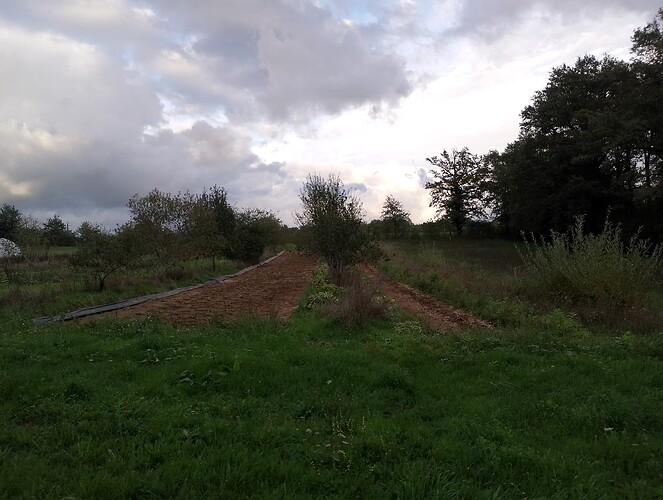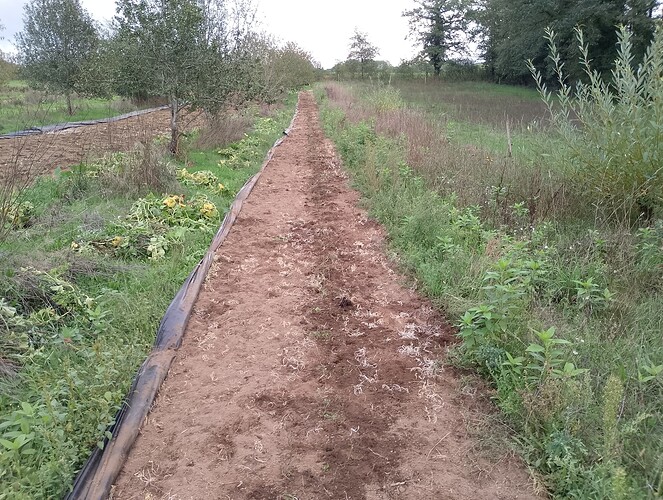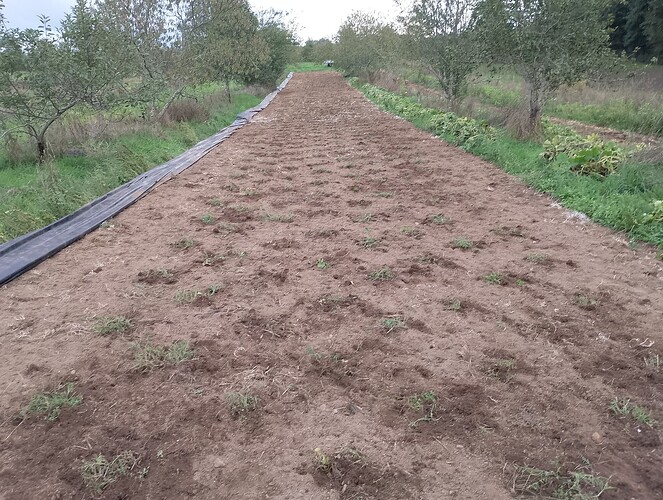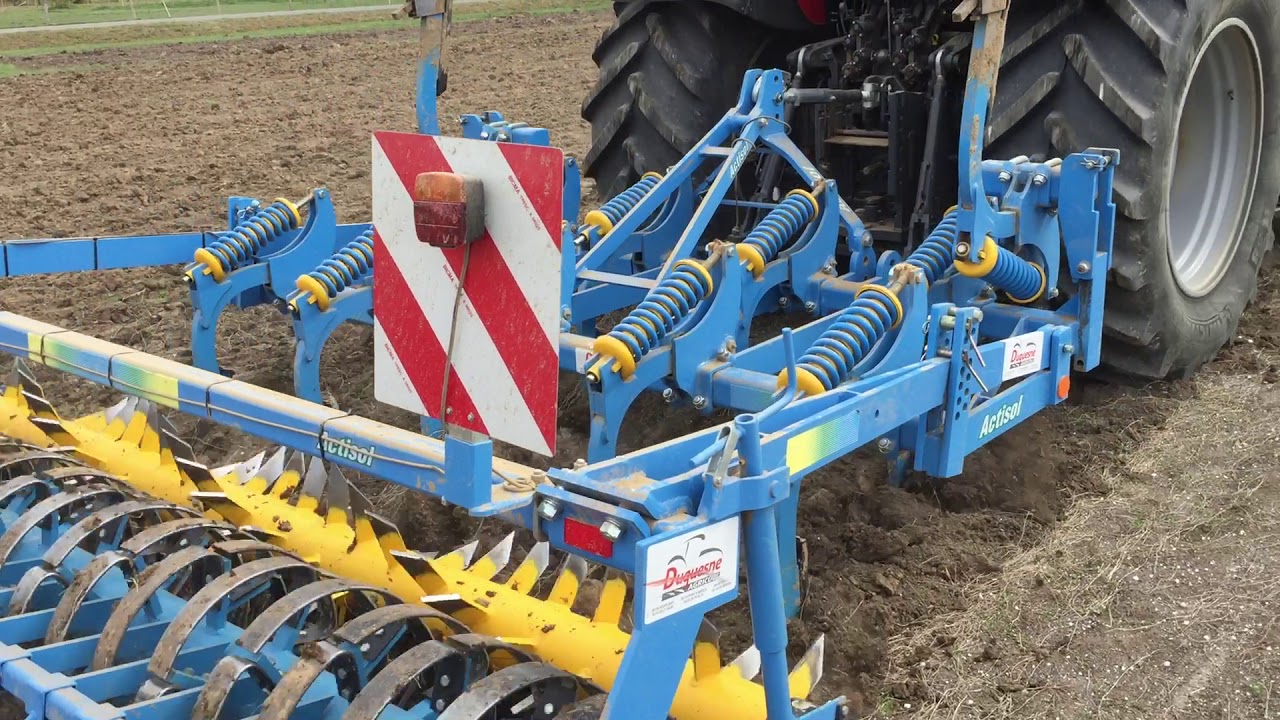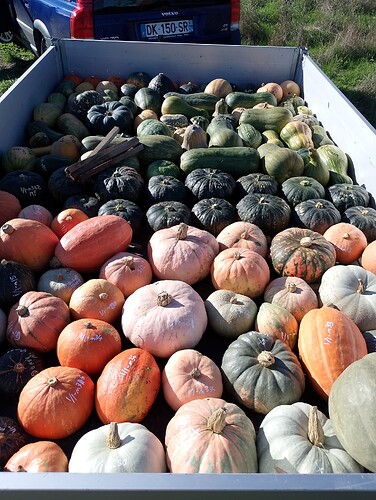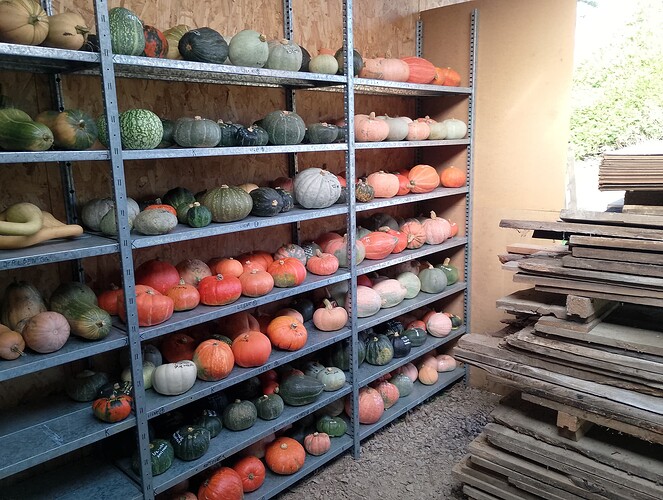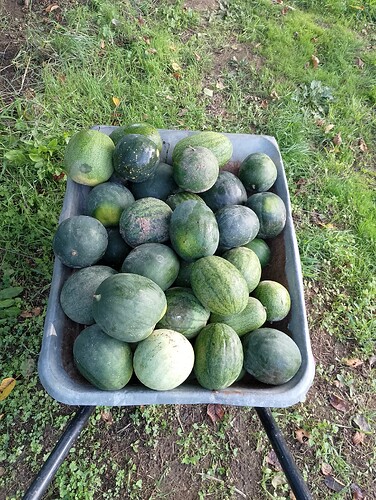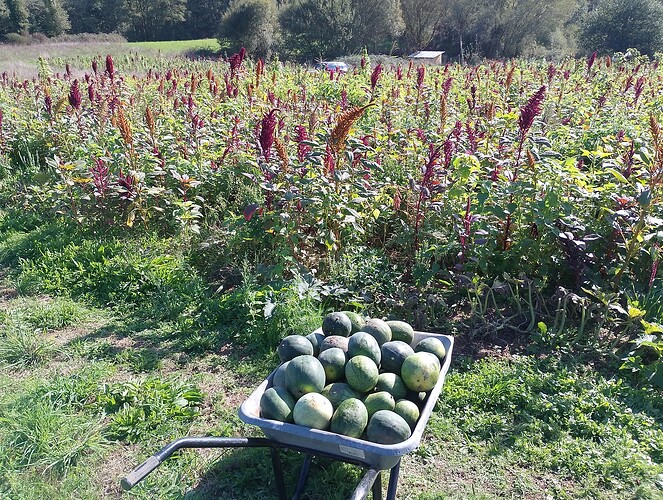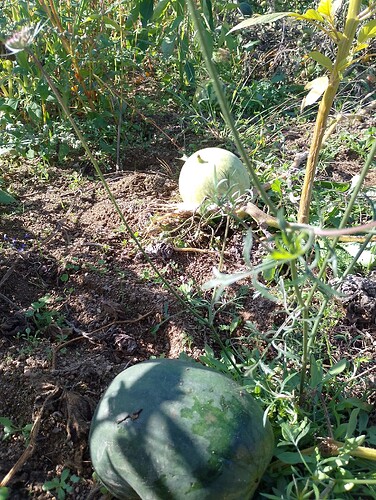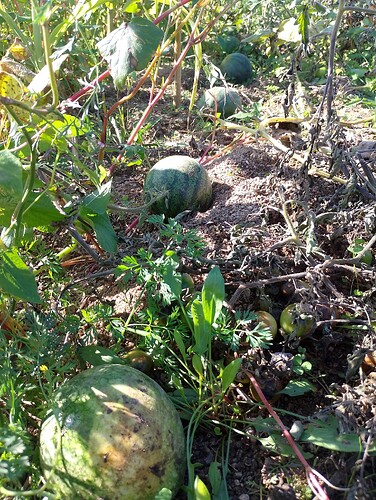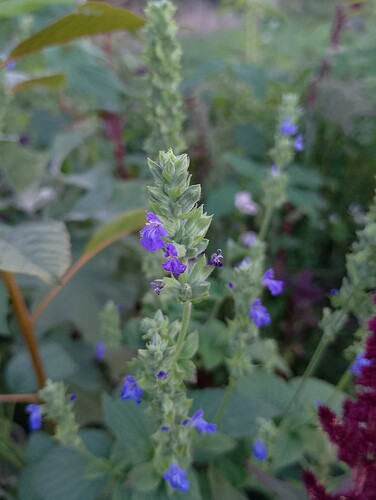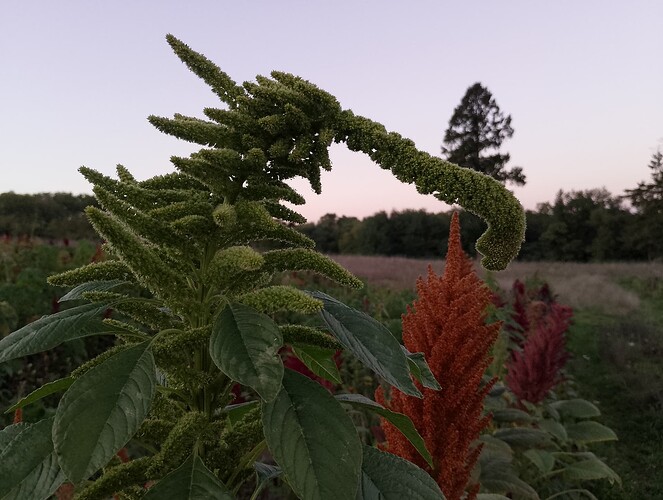Having harvested first dying Maximas in early September, and then Moschatas a fortnight after that, and that were all still very alive and higher yielding already, I’ve been first intrigued by this obvious difference in vitality (or at least in my fields… let me know about yours!)… and then hypothetized that their could be some underground factor at play … I had already red that in general Moschatas were more resistant, needed a longer growing season but were higher yielding globally.
What surprised me first in my maxima patch was those interspecific hybrids (maxima X moschata) that I intentionnally grew in the maximas: they were much more vigorous and… all still alive! So I decided to dug them up to examin the roots: much more fine root hairs showed up and they were all harder to pull up… and then I saw rerooting on those vines all around, when none on the maximas. Also most of Maximas had a single-line vine whereas Moschatas were much more branching from the point of emergence, showing up to 5 or 6 lateral branches, like a net.
So a fortnight after I did a global assesment of moschata roots while harvesting, and it was all consistant with those first observations.
Look at those rerooting + fine root branching on this particularly impressive Moschata:
This shows all signs of intense biological activity in the rhizosphere, even after shaking it:
Still searching for cues, I did cut also the stems at the point of emergence: some moschatas (like 10-20%) had intense accumulation of carotenes in the stem, supposedly a sign of superior health. Zero maximas showed that. Look for example this moschata with bright yellow-orange in the middle :
… Having discussed that very recently with one high level scientist in winter squash breeding, he said to me that - to his knowledge - nothing had been undertaken to characterize and then breed specifically for strong rooting systems… that except for grafting materials (like Tetsukabuto) which are nearly always interspecific hybrids, bred specifically for their strong rooting systems, overall vitality and pest tolerance…
So it seems to him like roots architecture, strength, vigor and overall characteristics are a 100% “underground” topic to the scientific community  … all investigations are to be done… And I think it’s particularly relevant when we talk about “regenerative agriculture” : we WANT intelligent plants, able to have good relationships with soil biology! (See James White Going to Seed course on soil-plants interactiond, or some of John Kempf’s contents I’ve posted in the “Interesting Video Dump” topic…). No correlation seems to have been done yet in winter squash. For example: with above ground health, fruit yield, fruit storage, aromas, etc. Though that’s a really promising ground theoretically… as the complexity of aromas is depending upon the intensity of soil-plant interactions, mediated by biology (see J.White)…
… all investigations are to be done… And I think it’s particularly relevant when we talk about “regenerative agriculture” : we WANT intelligent plants, able to have good relationships with soil biology! (See James White Going to Seed course on soil-plants interactiond, or some of John Kempf’s contents I’ve posted in the “Interesting Video Dump” topic…). No correlation seems to have been done yet in winter squash. For example: with above ground health, fruit yield, fruit storage, aromas, etc. Though that’s a really promising ground theoretically… as the complexity of aromas is depending upon the intensity of soil-plant interactions, mediated by biology (see J.White)…
…More on that soonish…
![]() Amazing, wonderful…
Amazing, wonderful…
